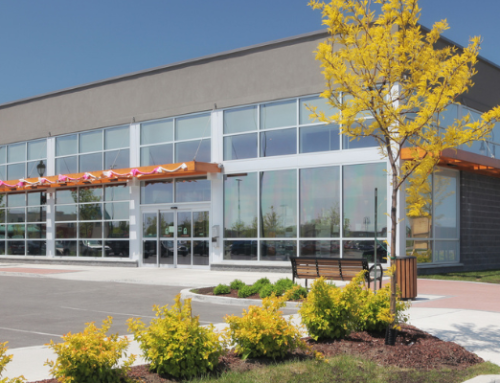The U.S. housing market proved to be extremely resilient in 2020 despite COVID-19’s impact on other real estate sectors. When commercial job sites were shut down or infrastructure projects delayed, new home construction remained relatively strong. 2020 ended with 5.64 million homes sold, an increase of 5.6 percent from 2019. How will these developments impact 2021’s housing outlook?
Looking Back to 2020
Against the backdrop of a 2.5 percent economic contraction, home sales in 2020 were up. It wasn’t an entirely positive year for the housing market, though. More than 1.7 million more homeowners ended the year seriously delinquent on their mortgages than in January 2020. Last year’s percentage of foreclosure filings was around 0.16 percent versus 2.23 percent in 2010. In an attempt to avoid the rash of foreclosures that occurred in the Great Recession, a moratorium on foreclosures has been extended to March 31, 2021.
2020 homeowner vacancy rate was 1.3 percent, and the rental vacancy rate was about 6.8 percent nationally. Pre-pandemic, mortgage rates were expected to increase slightly, and home price growth looked to be flattening. Now, evidence points to both those metrics changing.
2021 Housing Trends
2021 is looking to be another strong year for residential real estate. A high volume of home sales combined with higher rents and home prices is expected to double the growth. More consumers are able and willing to pay higher prices for homes, as evidenced by a report from the Fed’s New York branch, which found that median household spending will increase by about 3.7 percent in 2021. This is the most optimistic outlook since 2016.
It’s important to maintain cautious optimism, however; continued social distancing requirements and up-and-down buyer demand has some industry experts predicting an uneven recovery. This is especially true on a per-region basis. In Virginia and Maryland, home sales and prices in 2020 were higher than in 2019, matching national trends. Permits for new housing construction in both states increased during the second half of 2020, a trend that local real estate experts believe will continue into 2021.
A major shift that COVID-19 helped to accelerate is something of a mass exodus from urban housing in favor of the suburbs or less expensive locales altogether. In New York City, for example, about five percent and 18 percent of downtown and Manhattan residents, respectively, left the city between March and May – permanently. Despite the urban-to-suburban migration, the suburban housing market isn’t as strong as it might need to be to support the increased interest from urban migration.
Across the U.S., the available inventory of homes is down, and demand is up. It’s a seller’s market. And buyers are prepared to spend more on real estate. If interest rates remain low, the spring buying season shouldn’t be negatively impacted by the rise in property values. But if the Fed decides to raise rates and make debt more expensive, the housing market could push out potential buyers who simply can’t afford the debt and the high prices.
In 2021, mortgage rates probably will stop falling and will probably end the year slightly higher than 2020 at around 3.3 percent. This is good news, but enthusiasm remains tempered on the prediction that average home values will be up about 10.5 percent from 2020.
An interesting development in recent years is accelerating thanks to COVID-19: aging in place. More Baby Boomers are electing to stay in their homes as they age as opposed to selling and moving into a retirement community. This trend already started prior to the pandemic. As viral outbreaks in nursing homes across the country made the news, and families were not permitted to see their loved ones for months at a time, the desire to stay in one’s home only grew stronger. To that end, real estate stakeholders can expect less inventory on the market and more opportunities to retrofit existing homes to accommodate an aging population.
Tech’s role in real estate is only just beginning. From virtual showings to secure remote closings, real estate stakeholders can use this time to improve their tech infrastructure. Real estate transactions will continue to become more digital, automated, and streamlined.
Predictions for Residential Real Estate in Eastern Virginia
Some real estate experts are predicting that home prices in Eastern Virginia could rise as much as 50 percent by 2026. Historically, the Hampton Roads and Richmond metro areas have not seen the kind of property appreciation averages that areas like Washington, D.C. experienced, and this undervaluing of the housing market may spur higher prices soon.
This potential upswing in the local real estate market is due to a handful of factors, namely:
- Supply and demand imbalance
- Thousands of new jobs thanks to green construction initiatives and companies relocating
- Military push in shipbuilding, ship repair, and facility expansion
- Infrastructure improvements on land (4-lane highway) and at port
- Working from home and families relocating
The biggest threat to local market growth – and indeed, national growth – would be rising interest rates.
Takeaways
Overall, single-family homes are expected to have a strong year and continue to outperform other real estate sectors going in 2022. Most of the industry is likely to rebound, especially as economic growth continues and industry-friendly tax breaks, like 1031 exchanges, aren’t taken away yet. Most experts believe that the housing market is not headed for a crash or even a sudden drop-off, which is good news for owners, sellers, and investors alike. Contact Jennifer French, CPA, Partner and Team Leader of PBMares’ Construction and Real Estate group, for questions.





